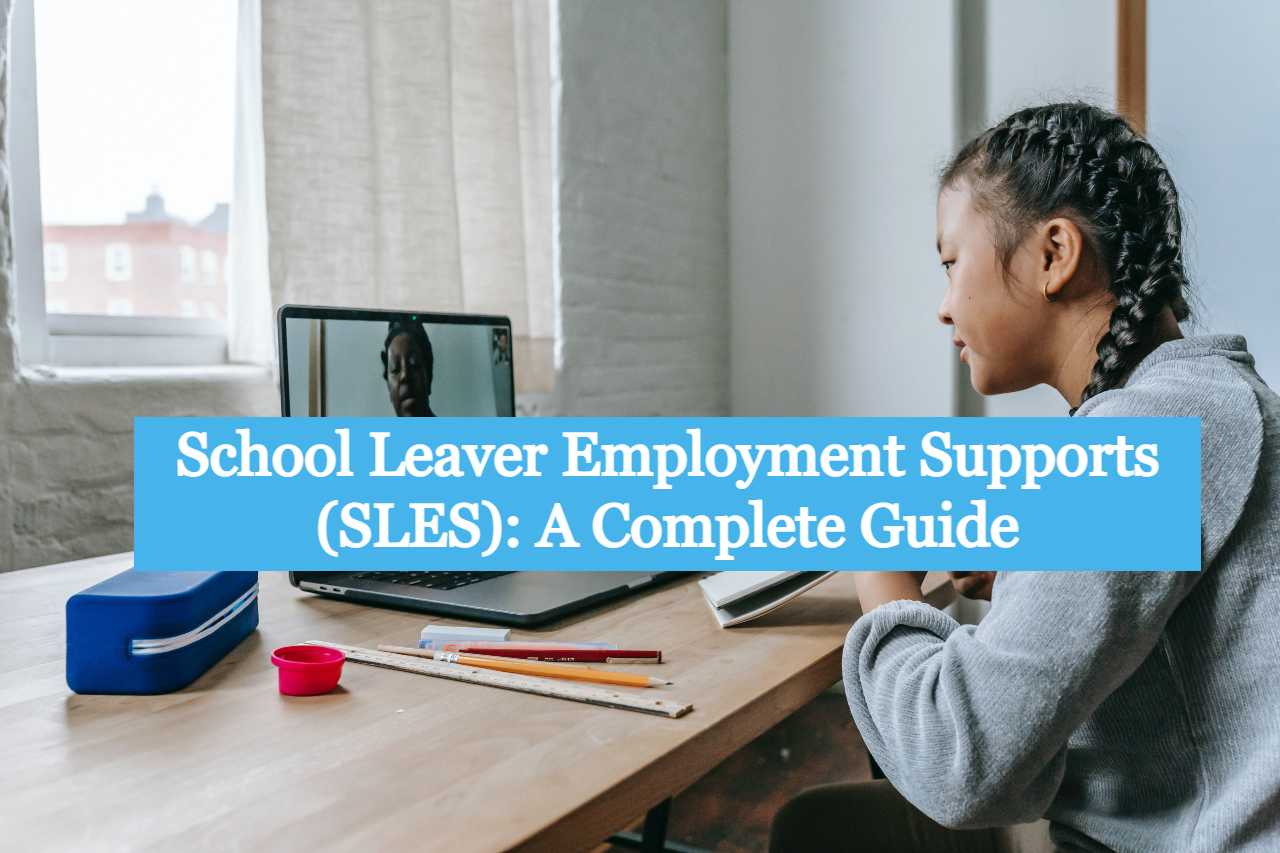A young person’s life after they leave school is exhilarating, but it’s also a major transition that many find intimidating. The goal of School Leaver Employment Services (SLES) is to ease the transition for young people with disabilities from school to employment and to prepare them for the workforce.
These individualized supports provide a great deal of flexibility, enabling young people to choose a special path to employment depending on their circumstances, skills, and support needs.
What is SLES?
SLES is a service provided by the National Disability Insurance System (NDIS). It is intended to help young people find fulfilling employment once they graduate from high school by boosting their confidence, independence, and skill sets.
SLES does more than just help people obtain jobs. Building a young person’s ability for independence while creating the groundwork they will need to interact with employers both now and in the future.
Some abilities that SLES can aid in developing include the following, albeit supports are customized to the individual’s condition, support need, and employment aspirations.
Using language in social and professional settings
- Knowledge about computers
- Basic financial management and accounting
- Writing a resume and interview techniques
- Methods for locating suitable employment
- Cooperating as a team
- Recognizing organizational culture
- Management of time
- Employee obligations and rights
Why SLES?
To combat what has been referred to as a “culture of low expectations” of individuals with disabilities among participants, families, planners, and the community, the NDIS adopted SLES. Only approximately 6% of early NDIS plans included employment support, indicating a lack of emphasis on work.
For young individuals, moving from school to employment represents a significant life adjustment. A “proactive effort to change the trajectory” is how SLES is viewed. It attempts to raise expectations by giving young people relevant job experiences and increasing participants’ and their families’ confidence to pursue a career.
The NSW Transition to Work (TTW) program served as the inspiration for SLES. A two-year program called TTW was started in NSW to assist young people with disabilities in finding jobs when they graduate from high school
SLES, however, is not a program like TTW. In contrast to SLES, which is an individualized strategy for employment support that is negotiated between a person and a provider and included in the person’s plan along with other “reasonable and necessary” supports, programs consist of a unified collection of activities that are carried out to achieve a set of specific shared outcomes for a cohort of people.
Who can receive SLES?
Participants in the NDIS who are leaving or have just left school and require additional support can access SLES to make the transition from school life to a corporate schedule.
Although the supports are primarily geared toward year 12 students, anyone who is of legal age to leave school is eligible to use them. Typically, this occurs around the tenth year, though this varies depending on the state or region you are in. The typical eligibility threshold for SLES is 22.
What is the SLES funding process?
The funding program includes SLES, and it is offered annually for a maximum of two years. Participants receive a lump sum of about $22,000, which they can use to pay for support throughout the year.
SLES service providers and participants will agree on a yearly schedule of events and a reasonable price rather than charging an hourly rate.
Who offers support for SLES?
Numerous companies offer SLES assistance. Some focus on a specific area, such as getting to and from work, while some cover a broad variety of skills to get people ready for the workforce.
Participants can choose and combine the services they feel will best support them in attaining their job and independence goals by using their SLES funds to engage with a variety of service providers.
Since SLES entails developing a program of support that will cooperate to achieve an overarching employment goal, support coordination is frequently used in conjunction with it.
Support coordinators closely collaborate with participants to create a personalized SLES package that is ideal for them, and then they assist them in choosing and establishing connections with the top providers.
How does school leave employment support work?
The funding for school-leaver job support increases a participant’s capacity and self-assurance for entering the workforce.
Depending on the participant’s situation, the NDIS may be able to provide funding for school leave job support for up to two years.
The job support for each school dropout will be unique. An individual program of support to aid participants in becoming ready for employment may include the following competencies:
- Money management abilities
- Talents with time management
- Exercises for discovering communicative abilities
- Working knowledge
- Job-ready abilities
- Personal growth abilities, travel skills
WHAT IS THE REVIEW PROCESS?
SLES is still at an infant stage. It was tested under various law acts based on multiple states’ policies, and it is still being reviewed and refined as we speak through an action research approach. But the initial indications are promising. Young people have significant chances for better outcomes when skill and confidence development is personalized and person-centered, with them in control.
What distinguishes SLES and DES from one another?
Given that both SLES and DES (Disability Employment Services) are committed to establishing employment routes, there are certain parallels between them. For those who are prepared to enter the workforce but still require assistance locating and retaining employment, DES might be seen as the next step on that road. There are no age restrictions and it is open to anyone with a disability or medical condition, whether or not they are NDIS participants.




